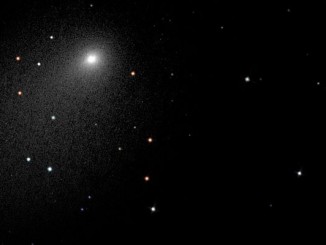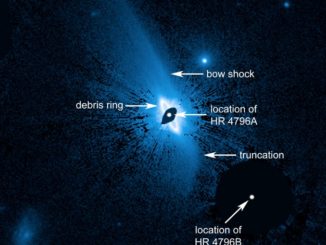The collaborative Super Pressure Balloon Imaging Telescope – SuperBIT – has captured its first images following the high-altitude balloon’s launch on 16 April from New Zealand. This image of the Tarantula Nebula was captured in the near-space environment by the telescope’s 0.5-metre mirror at an altitude of 33 kilometres (20 miles). Such balloon-borne instruments are much less expensive to build and launch than space telescopes, they float about 99.5 percent of Earth’s atmosphere and the stadium-size helium balloons can stay aloft for up to 100 days as they circumnavigate the globe. Like the much larger Hubble Space Telescope, the SuperBIT telescope images in the visible-to-near ultraviolet regions of the spectrum but has a much wider field of view. The goal of the current research campaign is to characterise dark matter concentrations around galaxy clusters by measuring how member galaxies warp the space around them. SuperBIT is a joint venture between NASA, the Canadian Space Agency, Durham University, the University of Toronto and Princeton University.




